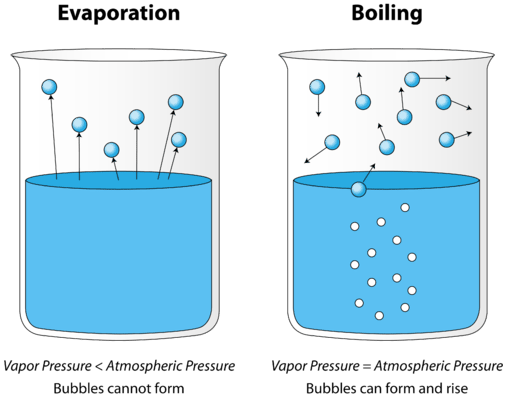Curious about the fundamental concepts of kinetic and potential energy? Look no further!
In this blog post, we’ll delve into the similarities between these two fundamental forms of energy. From their definitions to real-world examples, you’ll gain a comprehensive understanding of the key similarities between kinetic and potential energy.

What is Kinetic Energy?
Kinetic energy refers to the energy an object creates due to its movement. It is a scalar quantity that depends on an object’s mass and its velocity. In simpler terms, the faster an object moves, the more kinetic energy it has. Kinetic energy is the work needed to accelerate a body from rest to its current velocity.

What is a Potential Energy?
Potential energy refers to an object’s energy because of its position or arrangement concerning other objects. A scalar quantity also depends on an object’s mass and position in a gravitational field or a spring. One can store potential energy in batteries, food, and fuels.
Similarities between Kinetic Energy and Potential Energy
Forms of energy.
Kinetic energy is an object’s energy in motion, while potential energy is the energy that an object possesses by its position or configuration. Although they are different types of energy, they are both fundamental forms of energy that play an essential role in the laws of physics.
Scalar quantities.
Kinetic and potential energy are scalar quantities, meaning they have magnitude but no direction. It makes them easy to calculate and compare, as they do not require vector analysis to be understood.
Same units.
Both kinetic energy and potential energy are measured in Joules (J). It means they have the same units and easily convert from one form to another.
Inter-convertible
Kinetic energy can be converted into potential energy and vice versa. It is demonstrated by energy conservation, which states that energy cannot be created or destroyed but can convert from one form to another. For example, a ball thrown into the air has kinetic energy as it moves upward. Still, as it reaches its maximum height, all of its kinetic energy is converted into potential energy. As the ball falls back to the ground, its potential energy is converted back into kinetic energy.
Dependency on mass.
Both kinetic energy and potential energy are dependent on mass. The greater the mass of an object, the greater it’s potential and kinetic energy. It means that the energy possessed by an object is directly proportional to its mass.
Transfer from one object to another.
Kinetic and potential energy can be transferred from one object to another. For example, when a moving object collides with a stationary object, some of the kinetic energy is transferred from the moving object to the stationary object, causing the stationary object to move. Similarly, when a compressed spring is released, the potential energy stored in the spring is transferred to the object it is pushing, causing it to move.
Both can be used to do work.
Both kinetic energy and potential energy can be used to do work. For example, when a moving object collides with a stationary object, the kinetic energy of the moving object transfers to the object, causing it to move and do work. Similarly, potential energy can be converted into kinetic energy and used for work. For example, a ball held above the ground has potential energy. When it is dropped, its potential energy converts into kinetic energy, and you can use it to do work, such as knocking over a stack of blocks.
FAQs
What are the differences between potential energy and kinetic energy?
Potential energy and kinetic energy are two different forms of energy. Potential energy is stored in an object due to its position or state, while kinetic energy is the energy an object possesses due to its motion. The main difference between the two is that potential energy is related to the position or state of an object. In contrast, kinetic energy relates to an object’s motion.
How are potential energy and kinetic energy similar?
Potential and kinetic energy are similar in that they are both forms of energy. They also have a cause-and-effect relationship, where you can convert potential energy into kinetic energy, which can convert into potential energy. Additionally, both potential and kinetic energy are scalar quantities, meaning they have magnitude but no direction.
What are the formulas for kinetic and potential energy have in common?
The kinetic and potential energy formulas have a standard variable: the object’s mass.
The formula for kinetic energy is KE = 1/2 mv^2, where m is the mass of the object and v is its velocity. The formula for potential energy is PE = mgh, where m is the object’s mass, g is the acceleration due to gravity, and h is the object’s height above a reference point.
What objects have both kinetic and potential energy?
Objects that are in motion and have a position in a gravitational field can have both kinetic and potential energy. Examples of such objects include a swinging pendulum, a bouncing ball, a roller coaster car at the top of a hill, and a rocket accelerating into space.
Which of the following has both potential and kinetic energy?
An object in motion and position in a gravitational field has both potential and kinetic energy. Examples of such objects include a swinging pendulum, a bouncing ball, a roller coaster car at the top of a hill, and a rocket accelerating into space.
What is the relation between kinetic energy and potential energy, and total energy?
Both kinetic and potential energy are forms of mechanical energy, and they can add together to determine the total mechanical energy of an object. The sum of an object’s kinetic energy and potential energy is its total mechanical energy. The conservation of energy principle describes this relationship and affirms that the total energy of a closed system remains constant.
Are potential and kinetic energy equal?
Potential and kinetic energy are not equal but are interconnected. An object has potential energy but no kinetic energy at rest. Conversely, an object in motion has kinetic energy but no potential energy. To determine an object’s energy, we consider its potential and kinetic energy, adding them together to get its total mechanical energy.












Leave a Reply